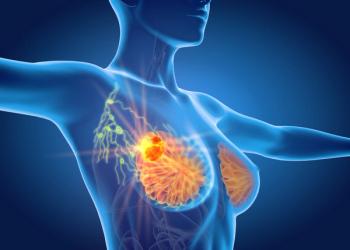
Oncology NEWS International
- Oncology NEWS International Vol 18 No 2
- Volume 18
- Issue 2
NSABP B-30: Amenorrhea relates to survival
In a subset of 2,366 patients from NSABP B-30 with menstrual history available at follow-up, amenorrheic patients (≥ six months) had significantly improved overall and diseasefree survival across treatment arms. Mortality was significantly reduced by 24% and recurrence by 30%.
In a subset of 2,366 patients from NSABP B-30 with menstrual history available at follow-up, amenorrheic patients (≥ six months) had significantly improved overall and diseasefree survival across treatment arms. Mortality was significantly reduced by 24% and recurrence by 30%.
Of 2,111 patients with follow-up quality-of-life data, QOL (by FACT-B rating scale) and symptoms were essentially the same for all regimens at all time points. The exception was the six-month assessment, where patients receiving AC→T had significantly lower QOL and higher symptom scores, but both measurements later returned to baseline (abstract 75). Younger women had more severe symptoms independent of the development of amenorrhea. Persistent amenorrhea was least severe in the AT arm, reported Patricia Ganz, MD, of the University of California, Los Angeles.
“This information about quality of life, symptoms, and amenorrhea risk can be useful in making treatment decisions,” Dr. Ganz said, suggesting AT as an alternative for women in whom preservation of fertility is paramount over the modest improvement in survival.
Articles in this issue
almost 17 years ago
Consortium advances multidisciplinary program for colon canceralmost 17 years ago
Celator joins leukemia society for phase II trial of CPX-351almost 17 years ago
Genzyme nabs FDA approval for stem cell mobilizing agentalmost 17 years ago
FDA launches pilot safety program for foreign drugsalmost 17 years ago
Radiation oncology society adopts new monikeralmost 17 years ago
Varian places RT units; offers storage systemalmost 17 years ago
Improvements in Pap screenings proposedalmost 17 years ago
New outlook for neuroendocrine canceralmost 17 years ago
Mismatched cord blood stem cells meet need for urgent Rx in acute leukemiaNewsletter
Stay up to date on recent advances in the multidisciplinary approach to cancer.
















































































